
Varolo or Boot
These shoes were made in vibrant shades of red, yellow and blue sourced from Khatri dyers, and ornamented with silver or zari work. Designs and cuts on the soles were differentiated by community. The Maldharis of the Banni region were the largest users of these.Along with the rest of the wedding attire, they would always keep these shoes safe as part of the wedding trousseau. The bridegroom’s family would bless the shoes during a wedding meal ritual. This is still prevalent in some parts of the Banni.
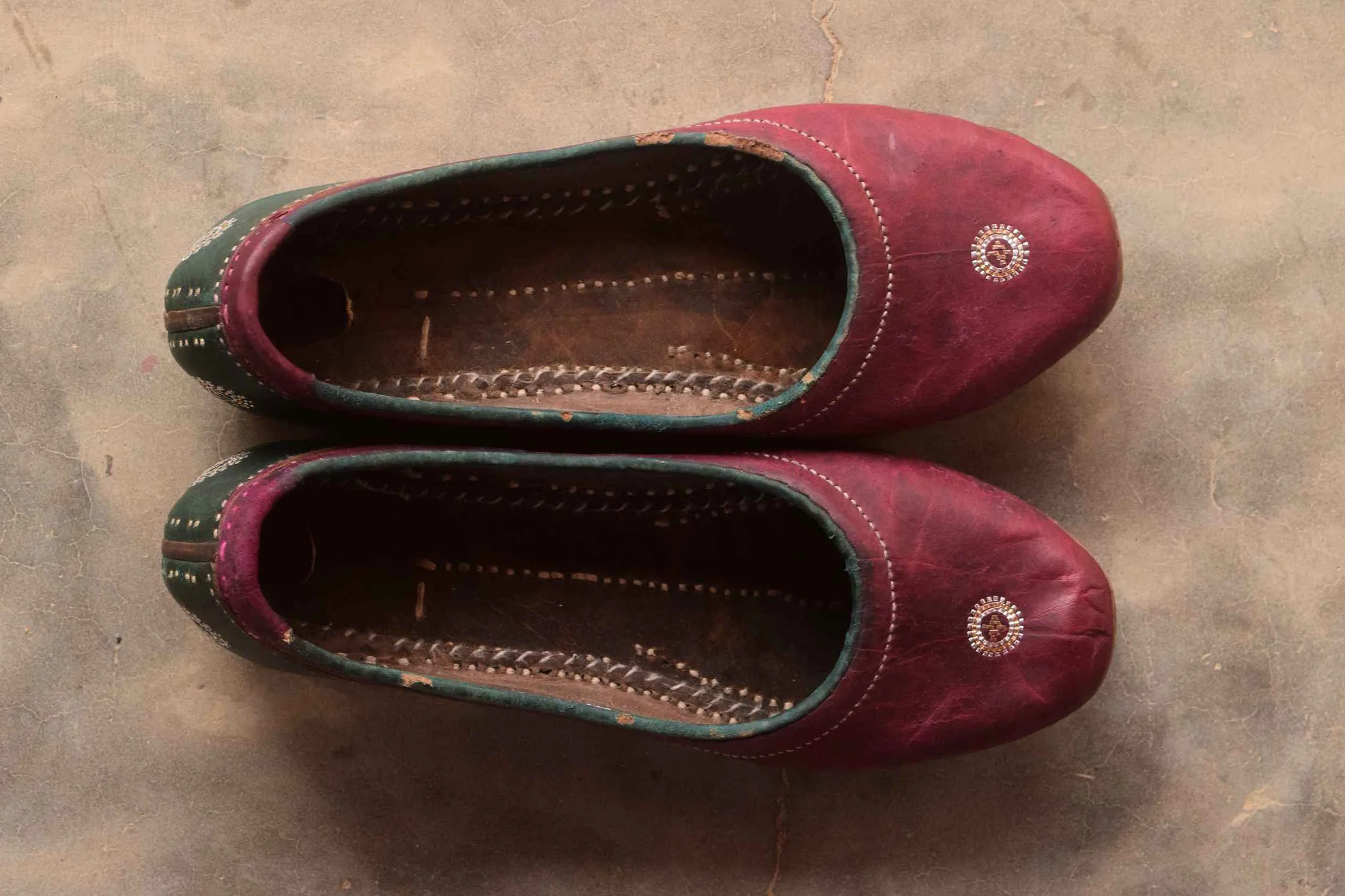
Getli Joota
Getli Jhoota were widely worn across Kachchh, but were most popular among men in the Banni region. These shoes were a dark brown or red, with minimal zari work. They were made from cow or buffalo hide which yielded thick leather well suited to endure the harsh terrain of Kachchh. Built to last, these shoes had thick soles that lasted three to four years of continuous use. Maldharis would often requested specific identifying features in their shoes. The soles had geometric cut outs which left distinct, identifying footprints behind. Other features might include a metal horse shoe attached to the heel, or pieces of leather sandwiched between the layers of sole to would make a distinct sound while walking.
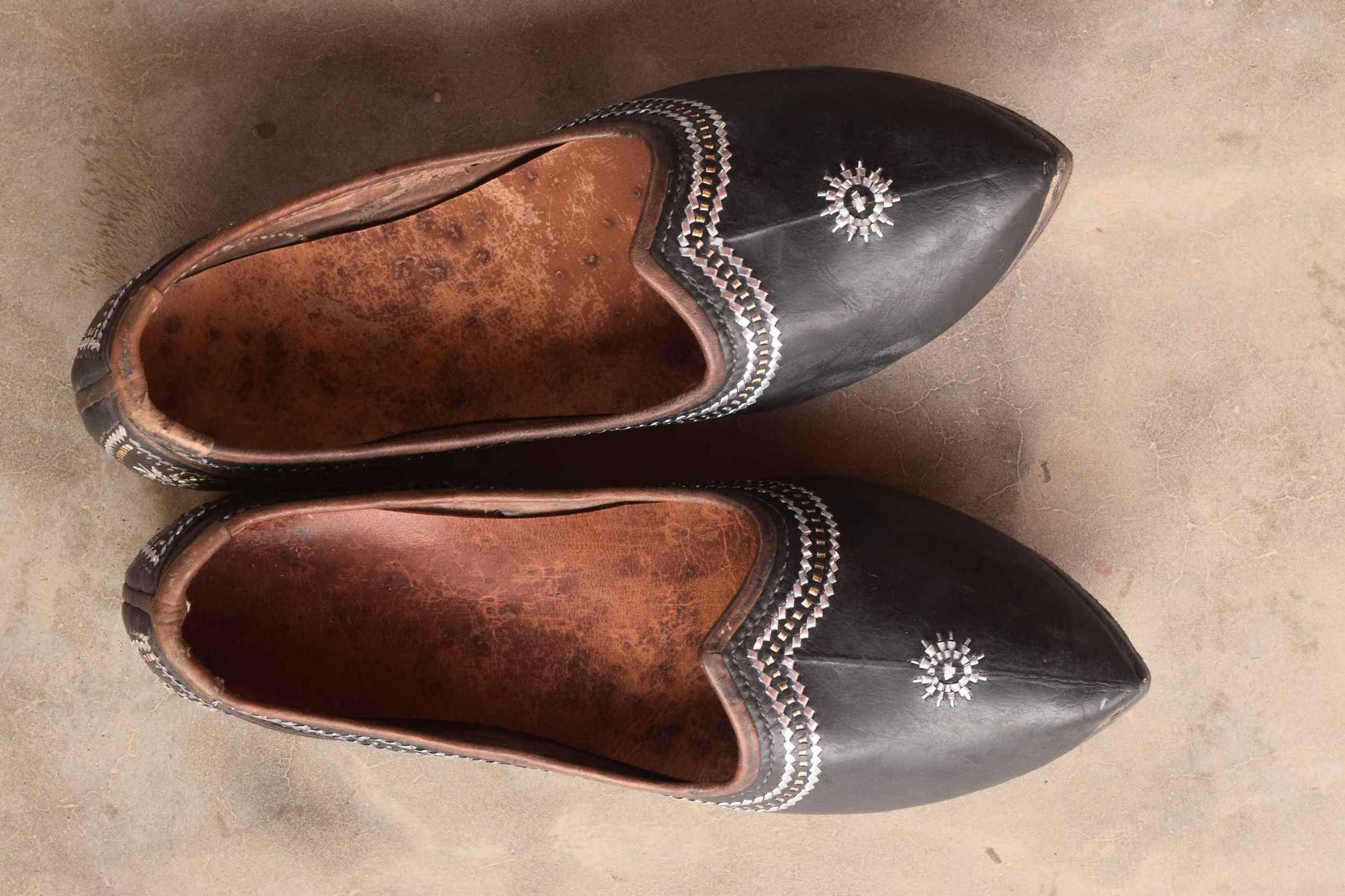
Getli Joota
Getli Jhoota were widely worn across Kachchh, but were most popular among men in the Banni region. These shoes were a dark brown or red, with minimal zari work. They were made from cow or buffalo hide which yielded thick leather well suited to endure the harsh terrain of Kachchh. Built to last, these shoes had thick soles that lasted three to four years of continuous use. Maldharis would often requested specific identifying features in their shoes. The soles had geometric cut outs which left distinct, identifying footprints behind. Other features might include a metal horse shoe attached to the heel, or pieces of leather sandwiched between the layers of sole to would make a distinct sound while walking.
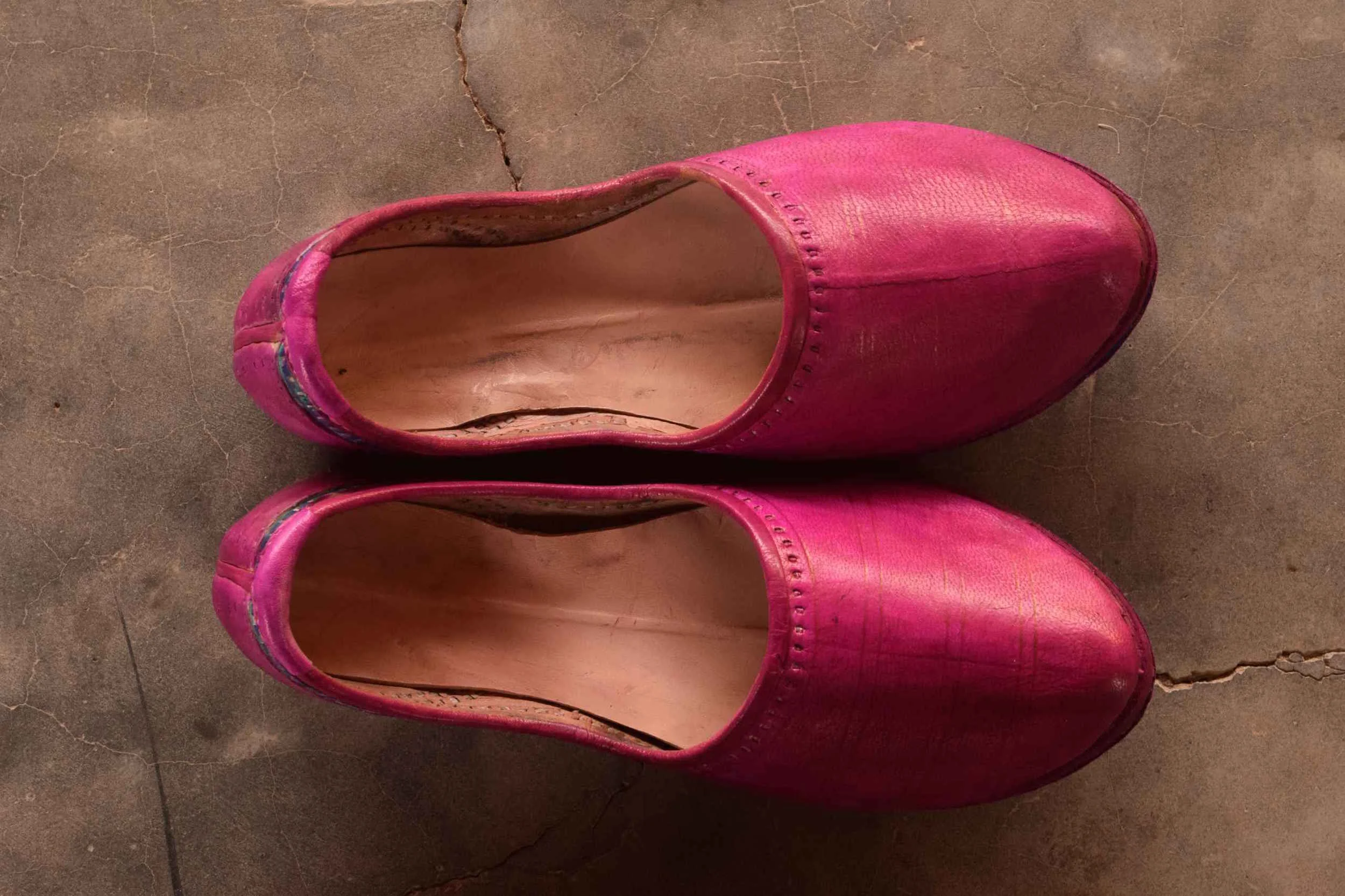
Setiyaro
These shoes were simple and lightweight, with minimal design, and were used by the elder Maldhari men in Banni. Cutout motifs on the sole were present only if the user requested them.
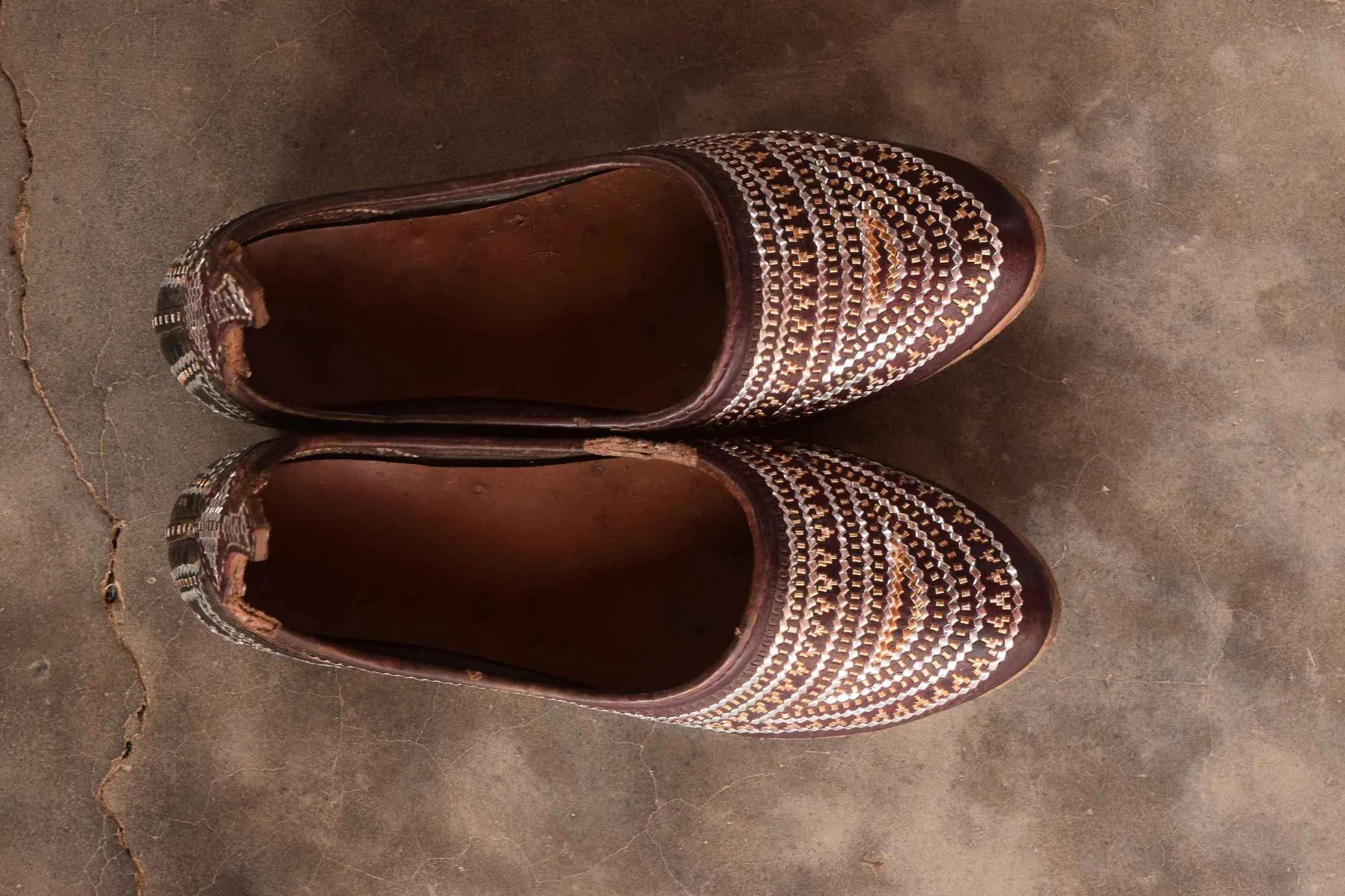
Choti vala Joota
These shoes were so named because of the distinctive tail at the back of the shoe. Because of the fine zari work, they were worn on special occasions by men in Banni. The pattern for the toe-cap could be pointed or rounded, depending on the wearer’s preference. The Mutwa Maldharis were particularly fond of this style.
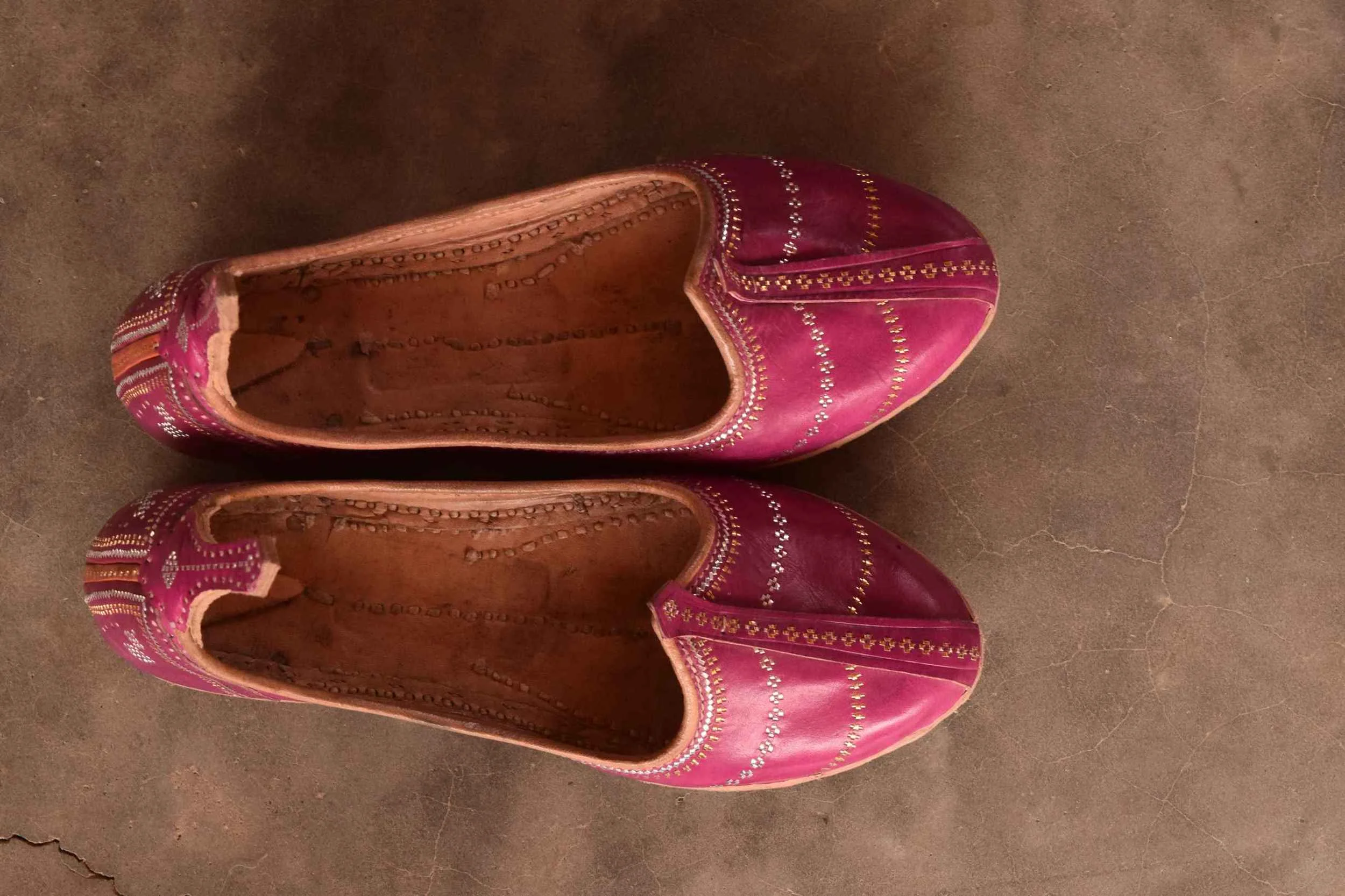
Chhoti vala Joota
These shoes were so named because of the distinctive tail at the back of the shoe. Because of the fine zari work, they were worn on special occasions by men in Banni. The pattern for the toe-cap could be pointed or rounded, depending on the wearer’s preference. The Mutwa Maldharis were particularly fond of this style.
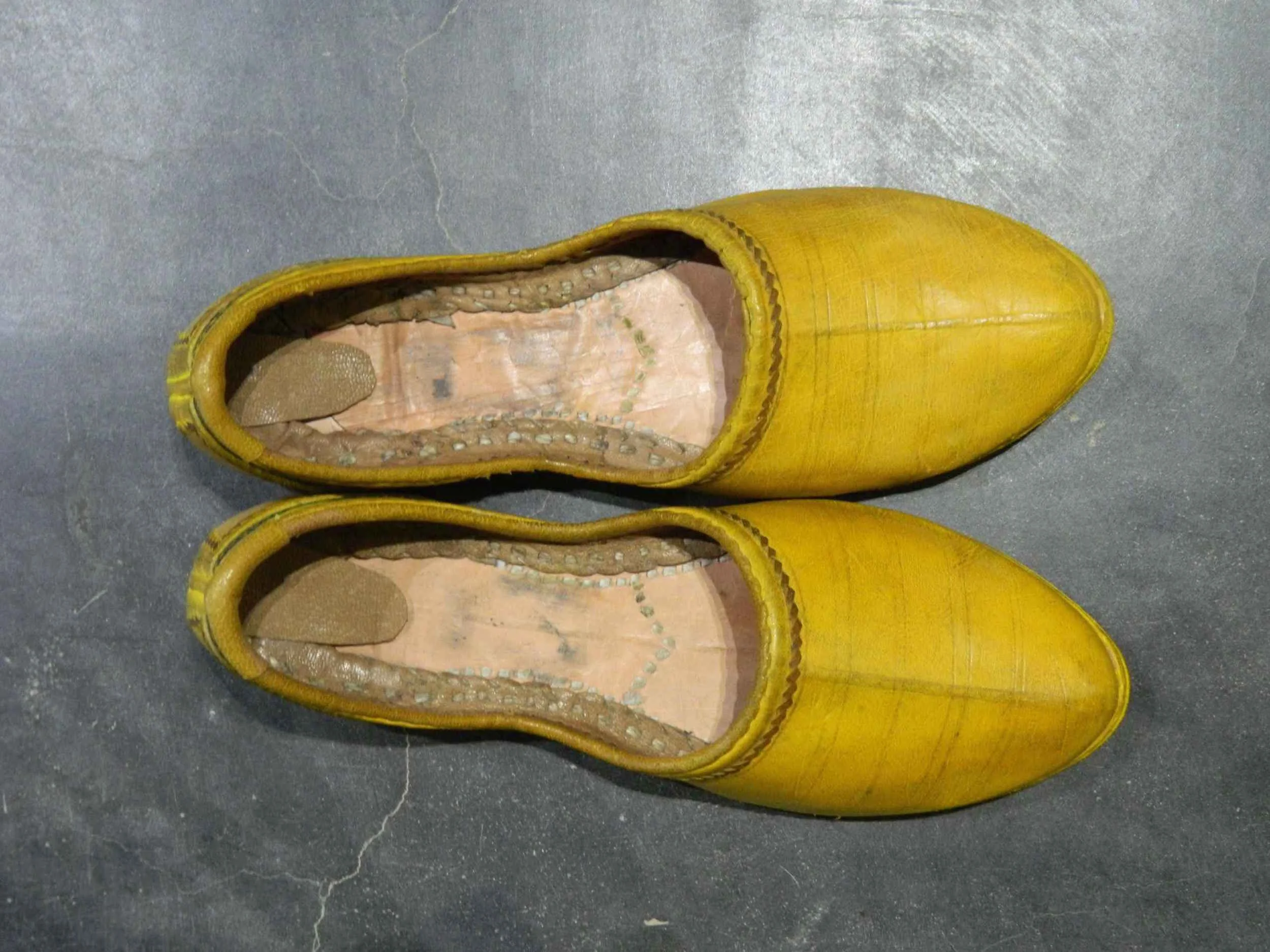
Chelar
These were daily wear shoes with thin and lightweight soles. The distinct feature of these shoes was a gap of exact two figures between the phadiyan half sole and heel.The width of the sole was kept extremely narrow to maintain lightness.
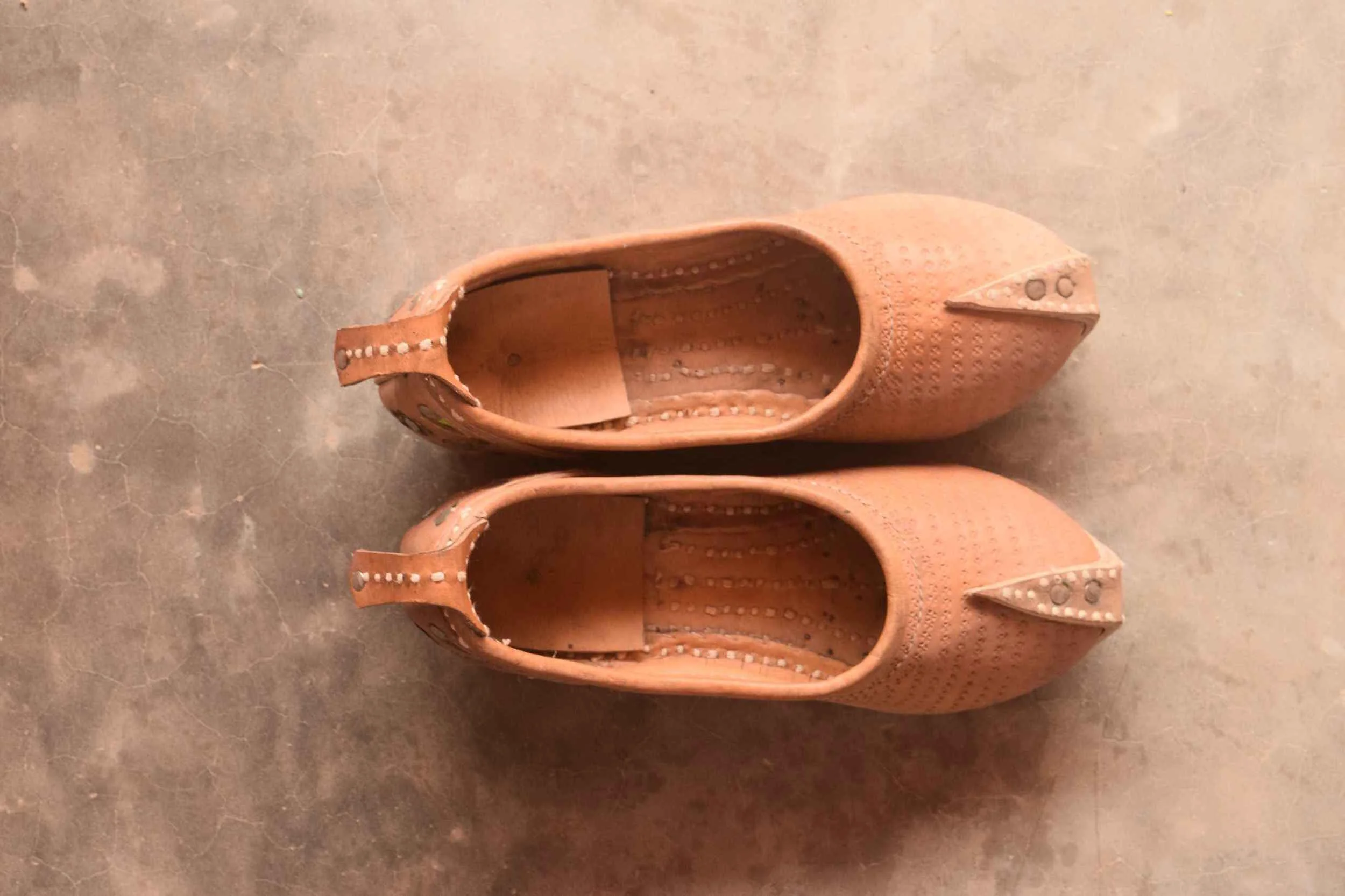
Boot
These shoes with their distinct toe-cap and back tail were worn by Wagadiya Rabaris, the sheep and goat herders in the region of Wagad. The Rabaris had a taste for the rustic and the shoes therefore were heavy with a thick outsole with nails and rivets for decoration. They valued these shoes to such an extent that they often hung them safe on their walking sticks while on the move instead of walking in them.







